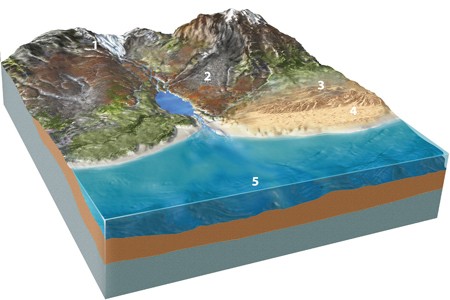In Charles Darwin’s day, the fossil record began abruptly with the appearance of shelled
organisms. Today, we consider the same period—the Cambrian—as an “explosion” of life
forms. Why has this perspective changed? What will be an ideal response?
Worm trails and other trace fossils from Late Proterozoic time are now being found in some
abundance, and are thought to be predecessors of the small shelly fossils of the Early Cambrian.
Furthermore, some Ediacaran organisms are showing up to the base of the Cambrian. As we find
more fossils, what first appeared to be an isolated fauna in the Burgess Shale are now being
linked to earlier life forms, although these earlier forms did not have shells.
You might also like to view...
A funnel cloud or tornado may develop from a rotating cloud that extends beneath a severe thunderstorm. Which of the following is the name for this rotating cloud?
A. roll cloud B. wall cloud C. mammatus cloud D. anvil cloud
Extrapolate from your data and estimate the discharge of the 100-year flood.
What will be an ideal response?
Which of the following locations would most likely contain a high percentage of sand?
A. locations 2 and 3 B. location 2, along a steep mountain front C. location 3, in sand dunes D. location 4, along a beach E. locations 3 and 4
Which of the following is an example of a push factor in migration?
A) disease in another country that is a potential destination B) famine in one's home country C) war in a neighboring country D) a higher-paying job in another country E) political freedom in one's home country